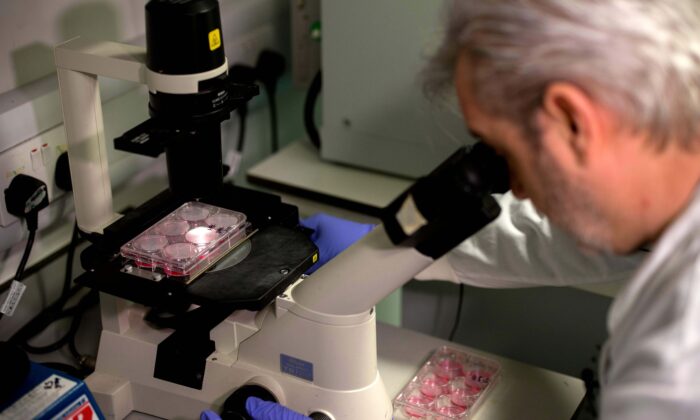Scientists in Brazil said they have discovered a virus that appears to be almost entirely new and consists of unrecognizable genes that have never been seen before.
The Yaravirus, named after Brazilian water goddess Yara, was found in Lake Pampulha, which is an artificial lagoon in the city of Belo Horizonte, according to a research paper published on BioRxiv.
Researchers at France’s Aix Marseille University and Brazil’s Federal University of Minas Gerais found that more than 90 percent of the genetic makeup of the virus has never been seen before.
“Most of the known viruses of amoeba have been seen to share many features that eventually prompted authors to classify them into common evolutionary groups,” the authors wrote. They added that Yaravirus “carries an important number of previously undescribed genes.”
The virus has the ability to infect amoebas. Researchers said there is no evidence the virus can infect humans.
“It would be necessary to isolate new viruses similar to Yaravirus to improve our analysis and try to define their origin,” Jonatas Abrahao, an associate professor at Federal University, told Live Science. “If we consider all known viruses by now, we can say that most of them do not represent any threat for our health,” he added.
In elaborating on how unusual the virus is, Abrahao said only six of its 74 genes showed some degree of similarity to other known viruses. The new virus is only 80 nanometers in diameter, or about 0.1 percent the thickness of a human hair.
But he said the discovery suggests scientists “know only a very small fraction of this diversity” of viruses on Earth. “There is still a lot to explore,” he added.
According to an alert on BioRxiv, the Yaravirus findings have not yet been peer-reviewed.
 A tourist wearing a mask poses for a photo with the Olympic rings in the background, at Tokyo’s Odaiba district, Japan, on Jan. 29, 2020. (Jae C. Hong/AP Photo/File)
A tourist wearing a mask poses for a photo with the Olympic rings in the background, at Tokyo’s Odaiba district, Japan, on Jan. 29, 2020. (Jae C. Hong/AP Photo/File)The discovery comes on the heels after a new type of coronavirus, known officially as COVID-19, is believed to have sickened tens of thousands in China, prompted lockdowns in dozens of Chinese cities, and prompted other countries to implement travel bans on travelers coming from China.
Coronaviruses, which were first discovered in the 1960s, are a number of viruses that can cause respiratory infections, including the common cold. Rarer forms such as MERS, SARS, or COVID-19 can be fatal.
Seven strains of human coronaviruses are known, including 229E (alpha coronavirus), NL63 (alpha coronavirus), SARS, MERS, OC43 (beta coronavirus), and HKU1 (beta coronavirus). “People around the world commonly get infected with human coronaviruses 229E, NL63, OC43, and HKU1,” said the Centers for Disease Control and Prevention.
This article is from the Internet:Virus With Genes Scientists Can’t Identify Discovered in Brazil
WHO Officials Rush to Figure Out Size of Coronavirus Epidemic
